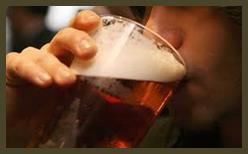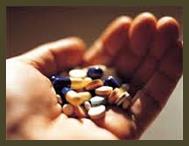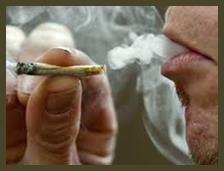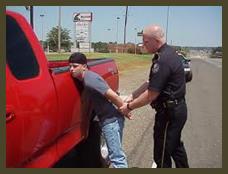Effect of Alcohol and Other Drug Abuse on the Driver of a Motor Vehicle
Alcohol and other drug abuse on the judgment of the driver of a motor vehicle and the order of the effects.
Alcohol and drug use degrade a person’s ability to exercise good judgment, including the ability to make the decision not to drive when impaired.
 After only one drink, both judgment and skill begin to show signs of decline. Of these two capabilities, judgment is the most important. Within a matter of minutes, alcohol travels from the stomach, through the blood stream, and to the brain. When alcohol reaches the brain, it affects those areas that control judgment and skill. Alcohol use also reduces a person’s inhibitions, which may lead to risk-taking behaviors that place the driver, passengers and others on the roadway in grave danger. Finally, in addition to degrading judgment while driving, alcohol has a very negative impact on judgment exercised before driving. Poor judgment impairs the potential driver’s ability to know when to stop drinking and may keep him/her from making a proper decision regarding whether or not to get behind the wheel.1,2,3,4
After only one drink, both judgment and skill begin to show signs of decline. Of these two capabilities, judgment is the most important. Within a matter of minutes, alcohol travels from the stomach, through the blood stream, and to the brain. When alcohol reaches the brain, it affects those areas that control judgment and skill. Alcohol use also reduces a person’s inhibitions, which may lead to risk-taking behaviors that place the driver, passengers and others on the roadway in grave danger. Finally, in addition to degrading judgment while driving, alcohol has a very negative impact on judgment exercised before driving. Poor judgment impairs the potential driver’s ability to know when to stop drinking and may keep him/her from making a proper decision regarding whether or not to get behind the wheel.1,2,3,4
As an example, one of our students, a young woman who was arrested with a BAL of .20, admitted that upon sobering up she could not remember making the decision to drive and could not even remember getting into her vehicle on the evening of her arrest. In another case which tragically resulted in the death of an impaired young woman who was attempting to drive home after drinking alcohol at a party, several of those who attended the party later claimed that while they knew the young woman was impaired and offered her a ride home, she simply would not accept their offer.
Similarly, drug use can lead to poor decision-making, which may result in a user’s bad decision to drive while impaired.
Alcohol and other drug abuse on the motor skills (reaction time and physical coordination) and vision of the driver of a motor vehicle.
 Alcohol and drugs impair our ability to safely operate a motor vehicle. As we reviewed in the last section, mental functions such as judgment, decision-making, and the ability to think and plan are impacted, and inhibitions are lowered. In addition, our physical functions such as motor skills, coordination, reaction time, perception, and vision are all degraded as well.
Alcohol and drugs impair our ability to safely operate a motor vehicle. As we reviewed in the last section, mental functions such as judgment, decision-making, and the ability to think and plan are impacted, and inhibitions are lowered. In addition, our physical functions such as motor skills, coordination, reaction time, perception, and vision are all degraded as well.
The National Highway Traffic Safety Administration reports that attention, reaction time, and visual function, all factors that impact driving skill, are impaired at Blood Alcohol Levels (BAL) as low as .02, which can be reached after consuming only one shot of liquor, one glass of wine, or one bottle of beer. Alcohol slows muscular movements and coordination, slows reflexes and reaction time, and impacts vision. Together, all of these changes cause the impaired driver to lose the ability to properly control a vehicle.3,4
Category of drugs and how they affect the driving task.
Drugs can be divided into three categories: stimulants, depressants, and hallucinogens. Although their specific effects are different, drugs from each of these three categories all negatively impact a driver’s ability to safely operate a motor vehicle.
Stimulants (Amphetamines, Methamphetamine, and Cocaine) temporarily speed up or excite the central nervous system causing feelings of alertness, high energy, and overconfidence when, in reality, the user’s body may be quite tired, exhibiting reduced mental and physical abilities due to a lack of sleep. Some drivers may actually use stimulants to help them stay awake when driving long distances; however, the effect soon wears off, and the user can then become tired very quickly. Stimulants degrade coordination, concentration, and judgment and may cause drivers to become easily excitable. Cocaine is addictive and can cause serious consequences during withdrawal.1,2,4,5
 Depressants slow down the central nervous system and degrade judgment, reaction time, eyesight, and alertness. Barbiturates are used to calm nervous conditions and, in addition to the above impacts, may cause the driver to become drowsy and lose consciousness; these negative impacts may last for several hours. Tranquilizers (Valium, Ativan, and Xanax) are used to treat anxiety, epilepsy, and muscle injuries and can have a very negative effect on a person’s ability to safely operate a motor vehicle. Narcotic pain medications (Percocet, Vicodin, and Oxycontin) can cause incoherence, dizziness, nausea and vomiting, hallucinations, confusion, and drowsiness. Do not drive if you are taking narcotic pain medications prescribed by your doctor. Sleeping pills (Ambien and Lunesta) can cause problems if a person attempts to drive before the effects of the sleeping pill have completely worn off. Alcohol is also classified as a depressant, and the negative effects associated with drinking alcohol are also present with the other depressant drugs.1,2,4
Depressants slow down the central nervous system and degrade judgment, reaction time, eyesight, and alertness. Barbiturates are used to calm nervous conditions and, in addition to the above impacts, may cause the driver to become drowsy and lose consciousness; these negative impacts may last for several hours. Tranquilizers (Valium, Ativan, and Xanax) are used to treat anxiety, epilepsy, and muscle injuries and can have a very negative effect on a person’s ability to safely operate a motor vehicle. Narcotic pain medications (Percocet, Vicodin, and Oxycontin) can cause incoherence, dizziness, nausea and vomiting, hallucinations, confusion, and drowsiness. Do not drive if you are taking narcotic pain medications prescribed by your doctor. Sleeping pills (Ambien and Lunesta) can cause problems if a person attempts to drive before the effects of the sleeping pill have completely worn off. Alcohol is also classified as a depressant, and the negative effects associated with drinking alcohol are also present with the other depressant drugs.1,2,4
 Hallucinogens (LSD, mushrooms, and marijuana) are illegal, mind-altering drugs. They can cause hallucinations, reality distortions, confusion, perception problems, and impaired judgment and reaction time. We have included marijuana in this category. The effects of marijuana use vary widely depending on the person’s mood, frequency of use, and drug strength. Testing seems to indicate that marijuana use has a major negative impact on a driver’s ability to recognize dangerous situations. Also, drivers report that using marijuana degrades judgment, concentration, alertness, reaction time, the ability to control a vehicle, and the ability to respond in an emergency. Some drivers attempt to drive several hours after using marijuana because they believe the effects have worn off; however, this is very dangerous as the negative impacts can last for a very long time.1,2,4,6,7,8
Hallucinogens (LSD, mushrooms, and marijuana) are illegal, mind-altering drugs. They can cause hallucinations, reality distortions, confusion, perception problems, and impaired judgment and reaction time. We have included marijuana in this category. The effects of marijuana use vary widely depending on the person’s mood, frequency of use, and drug strength. Testing seems to indicate that marijuana use has a major negative impact on a driver’s ability to recognize dangerous situations. Also, drivers report that using marijuana degrades judgment, concentration, alertness, reaction time, the ability to control a vehicle, and the ability to respond in an emergency. Some drivers attempt to drive several hours after using marijuana because they believe the effects have worn off; however, this is very dangerous as the negative impacts can last for a very long time.1,2,4,6,7,8
When does Impairment begin on the driver of a motor vehicle (motor skills and vision)? Impairment begins at the first intake of alcohol and other drugs. As use increases, ability to safely operate a motor vehicle decreases.
The very first pill, joint, or drink starts the impairment process. For example, with alcohol, a driver is presumed to be impaired with a blood alcohol level (BAL) of .08, but impairment actually begins well before reaching that level. As a person’s BAL increases, driving becomes increasingly dangerous. As you can see, the negative effects start at blood alcohol levels well below .08:
| BAL | Impairment |
| .02 - .03 | Judgment and reasoning begin to be affected. Inhibitions are lowered, and we become less critical of ourselves and others. Also, our ability to focus attention and our reaction time, visual function, and tracking and steering are degraded. |
| .04 - .05 | Reaction time is slower, we are less critical of ourselves and others, and we may appear relaxed and friendly. Eye movement control, standing steadiness, emergency responses, and coordination are degraded. |
| .06 - .07 | Judgment is less sound, and we demonstrate unclear thinking, unreasonableness, rudeness, and less reliable reasoning. Information processing, concentrated attention, and speed control are degraded. |
| .08 - .09 | Hearing, speech, vision, and balance are negatively affected. |
| .10 - .11 | Most behaviors are affected, body parts do not work well together, tasks requiring use of hands and feet are difficult, and walking without stumbling is difficult. |
| .3 or higher | Coma or deep sleep are experienced. If BAL reaches .5, the person will be in a deep coma and near death. |
In the state of Florida, you can be convicted of DUI at a BAL lower than .08 if your normal facilities, or abilities to drive safely, are determined to be impaired. Drinking only one drink will result in a BAL of .02 or higher for the average, 150-pound person. Therefore, the only way to insure safe, unimpaired driving is to completely avoid drinking before getting behind the wheel of a motor vehicle.1,2,4,9
Some people erroneously believe that it is safe to drive with a BAL that is below .08. However, the Department of Highway Safety and Motor Vehicles takes the position that safety is compromised when people attempt to drive with even small amounts of alcohol in their systems. In Florida, a commercial driver caught driving with a BAL of .04 or higher is disqualified from operating a commercial vehicle for a period of one year, and if this happens a second time, the disqualification is permanent. If these highly experienced drivers lose the privilege to operate a commercial vehicle if caught driving with a BAL of .04, then less experienced and less qualified drivers with non-commercial licenses should avoid driving after drinking as well.10
 While impairment is presumed at a blood alcohol level (BAL) of .08, in the state of Florida, drivers younger than age 21 that choose to drink and drive receive sanctions at much lower blood alcohol levels. A BAL of .02 or higher will result in a license suspension for six months, and a second offense will result in a license suspension for a year.11
While impairment is presumed at a blood alcohol level (BAL) of .08, in the state of Florida, drivers younger than age 21 that choose to drink and drive receive sanctions at much lower blood alcohol levels. A BAL of .02 or higher will result in a license suspension for six months, and a second offense will result in a license suspension for a year.11
Ways to avoid driving impaired (don’t drink if you will drive, designated driver, call a cab, call a friend, stay over, etc.)
In this section, we will review strategies to help you avoid driving while impaired. Of course, if you are younger than 21 years of age, the best way to stop impaired driving is to obey the law and to avoid underage drinking altogether.
 If, as an underage person, you decide to violate the law by consuming alcohol, you must exercise enough good judgment to avoid getting behind the wheel of a car. Unfortunately, as we have discussed, even one alcoholic beverage will impair your judgment. Some drivers try to reduce the negative effects of alcohol by drinking slowly, setting limits on drinking, trying not to match drinks with others, being aware of their own signs of impairment, and switching to non-alcoholic beverages a few hours before driving. While all of these steps may help to reduce your blood alcohol level, they will not guarantee unimpaired driving.1,2
If, as an underage person, you decide to violate the law by consuming alcohol, you must exercise enough good judgment to avoid getting behind the wheel of a car. Unfortunately, as we have discussed, even one alcoholic beverage will impair your judgment. Some drivers try to reduce the negative effects of alcohol by drinking slowly, setting limits on drinking, trying not to match drinks with others, being aware of their own signs of impairment, and switching to non-alcoholic beverages a few hours before driving. While all of these steps may help to reduce your blood alcohol level, they will not guarantee unimpaired driving.1,2
Once you consume an alcoholic beverage, your judgment is impaired. Therefore, before consuming the first drink, you must plan ahead to keep drinking and driving separated. The two best ways to keep drinking and driving separated are:
- Consume alcohol at home or at another location that will not require driving after drinking. If you plan to drink, the safest place to do so is at home, or at a friend’s house where you can spend the night. If you think that there is any chance that you may need to drive somewhere later, skip the alcoholic beverage.
 Plan for a Designated Driver. If you plan to drink away from home, go out with at least one other person who agrees not to drink. Monitor your designated driver to insure that he/she doesn’t break the non-drinking pact that you have made. If the designated driver drinks, find another way to get home. You can set a good example by volunteering to be the designated driver when you go out with family and friends. Hopefully, your friends and loved ones will reciprocate and volunteer to serve as the designated driver on a subsequent outing. Also, your friends and loved ones will have your example to follow when they are out and you are not with them.
Plan for a Designated Driver. If you plan to drink away from home, go out with at least one other person who agrees not to drink. Monitor your designated driver to insure that he/she doesn’t break the non-drinking pact that you have made. If the designated driver drinks, find another way to get home. You can set a good example by volunteering to be the designated driver when you go out with family and friends. Hopefully, your friends and loved ones will reciprocate and volunteer to serve as the designated driver on a subsequent outing. Also, your friends and loved ones will have your example to follow when they are out and you are not with them.
There are several other methods to separate drinking and driving. Planning to use one of these methods will require that you retain enough judgment, after drinking, to do the right thing and carry out the plan.
- Call someone for a ride.
- Call a taxi or use other public transportation.
- Spend the night where you have been drinking.1,2
REVIEW QUESTIONS FOR SECTION 7
The Section Review Questions will help to prepare you for the Final Exam; incorrect answers will not count against you. You must complete the Section Review Questions before moving on to the next section of the course.
0
1. Johnson M, Mottola F. Drive Right. Prentice-Hall, 2002, pp 314-322.
2. American Automobile Association (AAA). How to Drive: The Beginning Driver’s Manual. 14th edition, pp 61-67, 71-72, 81.
3. American Automobile Association (AAA). Safe Driving for Mature Operators. McGraw-Hill Education, 1998, pp.83-86.
4. American Automobile Association (AAA). Responsible Driving. McGraw-Hill Education, Mar 7, 2005, pp 56-65.
5. National Institutes of Health, National Institute on Drug Abuse. Research Report Series: Cocaine: Abuse and Addition. NIH Pub. No. 10-4166. Bethesda, MD: NIDA, NIH, DHHS. Revised September 2010. Available at: http://www.drugabuse.gov/sites/default/files/rrcocaine.pdf. Retrieved July 7, 2013.
6. National Institutes of Health, National Institute on Drug Abuse. Research Report Series: Hallucinogens and Dissociative Drugs. NIH Pub. No. 01-4209. Bethesda, MD: NIDA, NIH, DHHS. Printed March 2001. Available at: http://www.drugabuse.gov/sites/default/files/rrhalluc.pdf. Retrieved July 7, 2013.
7. National Institutes of Health, National Institute on Drug Abuse. Research Report Series: Marijuana abuse. NIH Pub. No. 12-3859. Bethesda, MD: NIDA, NIH, DHHS. Revised July 2012. Available at: http://www.drugabuse.gov/sites/default/files/rrmarijuana.pdf. Retrieved April 25, 2013.
8. Students Against Destructive Decisions. “Drug Czar, Secretary of Transportation, and Safe Driving Leaders Launch New Campaign to Urge Teens to ‘Steer Clear of Pot.’” SADD Press Release. September 16, 2003. Available at: http://sadd.org/press/drivingnews.htm. Retrieved July 7, 2013.
9. Florida Statutes, s. 316.193.
10. Florida Statutes, s. 322.61.
11. Florida Statutes, s. 322.2616.
